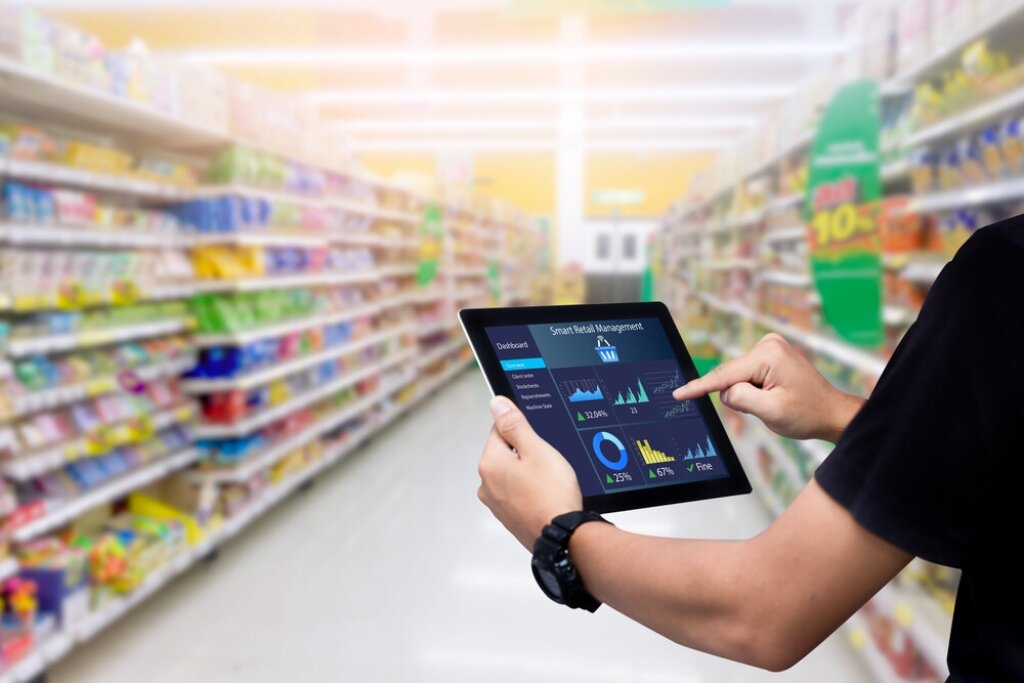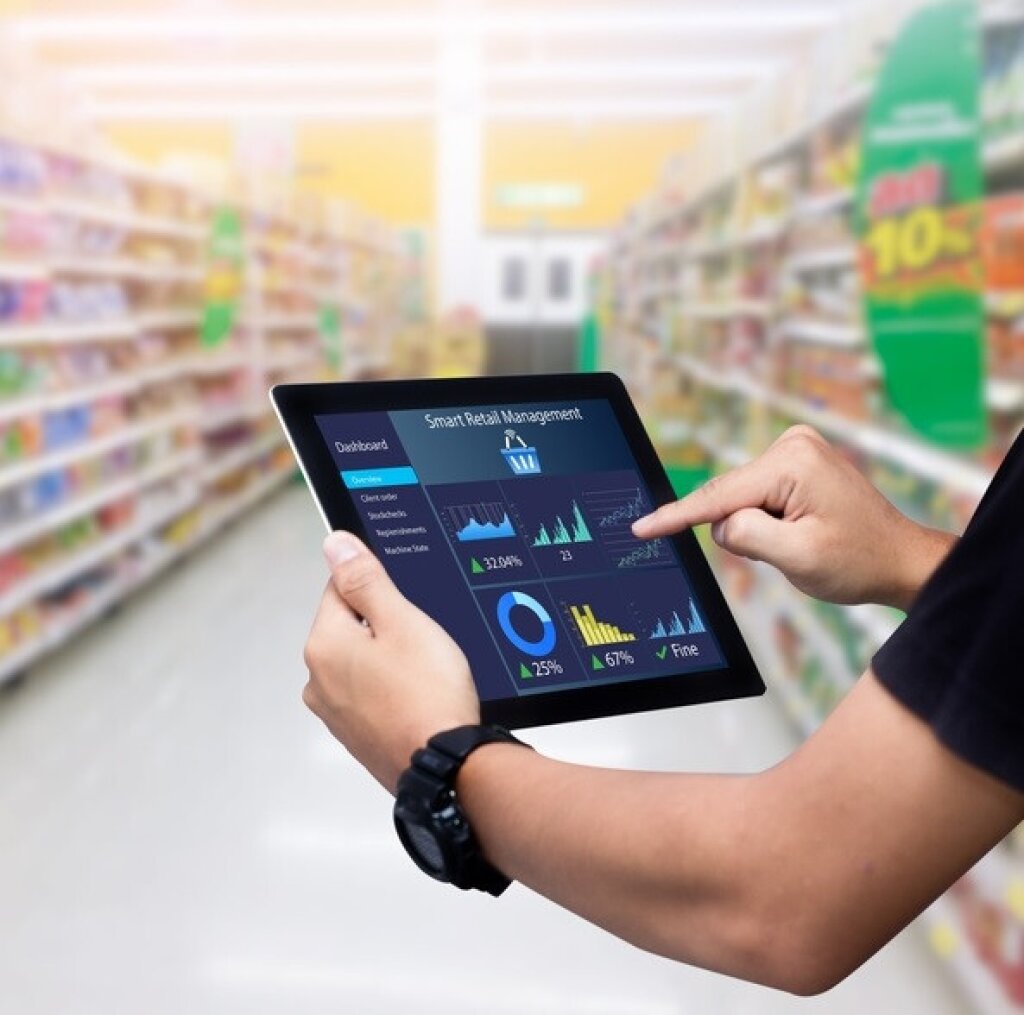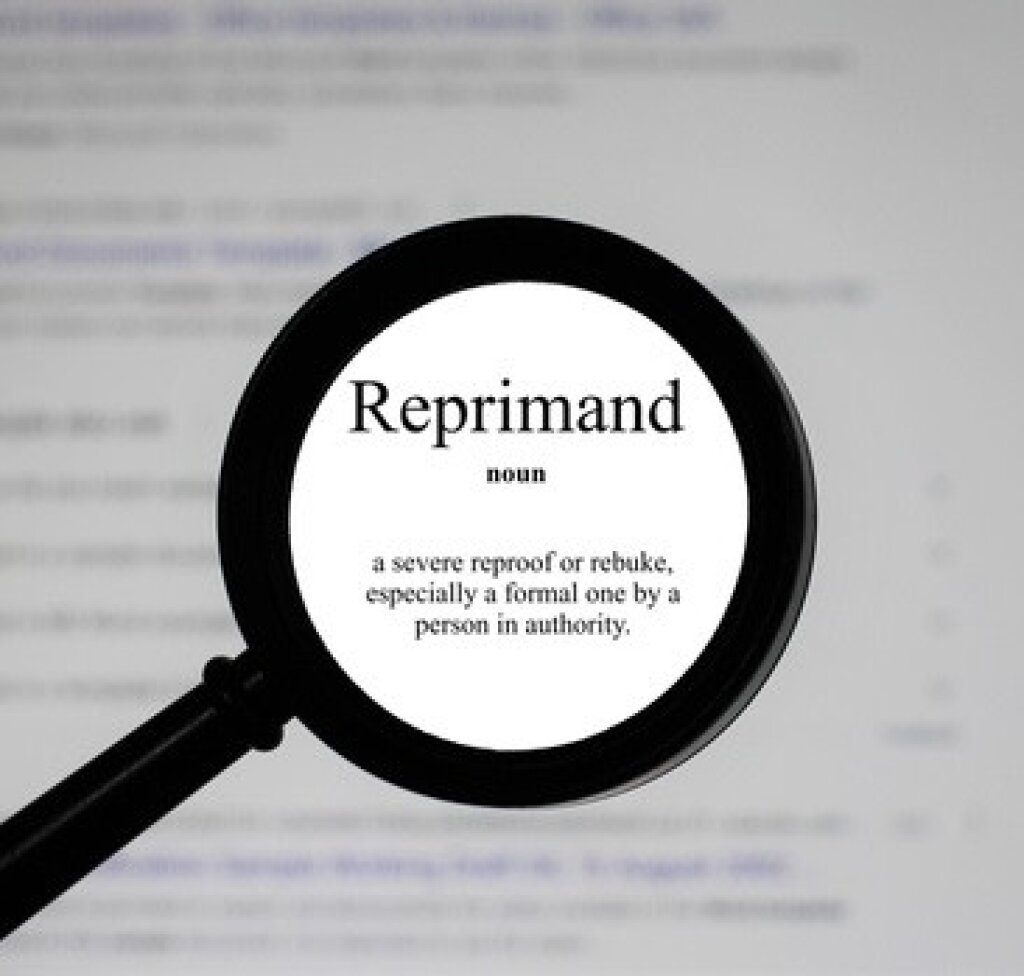AI Video Analytics for Retail Optimisation
In today’s competitive retail environment, businesses are leveraging cutting-edge technologies to enhance operational efficiency, improve customer experiences and boost profits. Among these innovations, AI video analytics has emerged as a powerful tool for retail optimisation.
By analysing video footage through artificial intelligence (AI) algorithms, retailers can gain actionable insights into customer behaviour, in-store operations and overall business performance.
This article explores the transformative potential of AI video analytics for retail optimisation and how it can lead to smarter decision-making and enhanced customer satisfaction.

What is AI Video Analytics?
AI video analytics involves the application of machine learning (ML) algorithms and computer vision to analyse live or recorded video footage.
Analytics automatically detect, track and process activities, objects or behaviours in real time without the need for manual monitoring.
In the retail space, AI video analytics goes beyond traditional surveillance and delivers a data-driven approach to understanding customer behaviour and optimising store operations.
How is AI Video Analytics deployed?
Retailers implementing intelligent video analytics have choices that include central processing and edge AI processing.
Central processing is typically conducted on servers at monitoring stations, while edge AI processing occurs directly within cameras.
Choosing one or the other influences not just the technology’s efficiency but also factors like data processing requirements, bandwidth usage and storage needs.
Today’s implementation trends lean towards hybrid solutions that blend real-time processing at camera level with more complex analysis at the central server. Hybrid solutions ensure a balance between immediate surveillance needs and in-depth retail data analysis.
Key Applications of AI Video Analytics in Retail
1. Customer Flow and Foot Traffic Analysis
Understanding customer movement within a store is crucial for optimising store layout and product placement. AI video analytics can track foot traffic patterns to identify high-traffic areas (or "hot zones") and reveal under-used spaces. With the information gathered, retailers can:
Optimise product placement to increase sales of specific items.
Adjust store layout to improve customer flow and reduce bottlenecks.
Reorganise promotional displays to align with the highest traffic areas.
For example, if analytics indicate that a particular aisle consistently sees less foot traffic, retailers can relocate popular items or promotions to draw customers into that area.
2. Shopper Demographics and Behaviour
AI video analytics can gather valuable data on shopper demographics, including age, gender and estimated mood to help retailers better understand their customer base. In addition, analytics can track customer dwell time - the amount of time shoppers spend in specific areas - and engagement levels with products or displays. By analysing data, retailers can:
Tailor marketing campaigns or in-store promotions to specific demographics.
Make data-driven decisions on products and inventory management.
Identify which products capture the most interest or are often overlooked.
This personalised understanding allows for more targeted product offerings and enhances the overall shopping experience.
3. Queue Management and Staff Optimisation
Long queues and slow checkouts are common pain points for shoppers and can lead to lost sales if customers abandon their purchases. AI video analytics monitors queue lengths and can predict peak times for customer checkouts. With accurate data, retailers can:
Optimise staffing levels in real-time to ensure that enough checkout lanes are open during peak hours.
Provide faster, more efficient service by identifying when and where additional staff are needed.
Improve overall customer satisfaction by minimising waiting times.
This dynamic staffing model not only enhances customer experiences but also reduces staff costs by allocating staff only when necessary.
4. Loss Prevention and Security
AI-powered video analytics can significantly enhance loss prevention efforts by identifying suspicious activities, such as shoplifting or employee theft. These systems use real-time anomaly detection to alert store managers or security teams of potentially harmful behaviour. Advanced analytics systems can:
Track individuals across multiple cameras to offer a comprehensive view of their actions.
Recognise pre-defined behaviours associated with theft or fraud.
Automatically trigger alerts for further investigation or intervention.
With these capabilities, retailers can drastically reduce losses from theft and improve overall security without the need for manual monitoring.
5. Customer Experience Enhancement
AI video analytics play a pivotal role in improving the in-store customer experience. By analysing shopper behaviour, the technology can detect when customers are struggling to find an item or require assistance. Insights enable retailers to:
Deploy staff to help customers at critical moments and create a more personalised shopping experience.
Identify patterns in customer behaviour to refine store layout or optimise product displays.
Track the effectiveness of in-store promotions and marketing efforts in real-time.
By delivering more responsive and personalised service, retailers can foster customer loyalty, drive repeat visits and boost profits.
How AI Video Analytics Leads to Retail Optimisation
AI video analytics provide unparalleled visibility into in-store operations to enable retailers to make data-driven decisions that optimise performance across various areas. Here’s how:
Improved Inventory and Merchandising Decisions
With insights into customer preferences and behaviours, retailers can refine their product ranges and merchandising strategies. Products that garner more attention or prompt higher engagement can be featured more prominently, while underperforming items can be repositioned or replaced.
Enhanced Store Layout and Design
Video analytics helps retailers to understand how customers navigate the store, which areas they visit the most and where bottlenecks occur. With this information, stores can be redesigned to create a smoother flow, maximise customer comfort and improve accessibility to high-demand items.
Staff Efficiency
AI video analytics enables retailers to align staffing levels with customer demand to ensure that employees are deployed where and when they are needed most. This not only reduces staff costs but also ensures customers receive the best possible service, particularly during peak times.
Real-Time Insights for Agile Decision-Making
AI video analytics provides real-time insights to enable retailers to make quick adjustments to store operations. Whether it's redistributing staff to address a sudden surge in traffic or tweaking the placement of high-demand products, improved agility can improve the bottom line significantly.
Ethical Considerations in AI Video Analytics
While AI video analytics provide numerous benefits, it is essential for retailers to approach this technology with a strong focus on privacy and data security.
Customers must be informed about the use of video analytics in stores, and retailers must comply with data protection laws like GDPR. Additionally, anonymising personal data and avoiding unnecessary surveillance helps to build trust with consumers and protect their privacy.
AI Analytics in Retail: Conclusion
AI video analytics represents a game-changing tool for retailers looking to optimise store performance and enhance the customer experience.
By leveraging data on customer behaviour, traffic flow, queue management and security, retailers can make informed decisions that improve efficiency and boost profitability.
As AI technology continues to evolve, its potential applications in retail will expand further and provide even greater opportunities for optimisation.
Retailers who embrace AI video analytics now will be better positioned to compete in an increasingly data-driven industry, and be able to deliver more personalised experiences and operational excellence in a highly competitive market place.
Facit’s Smart Analytics
Facit’s Smart Analytics enables retailers to gather valuable information from their already-installed CCTV cameras.
Facit’s solution ensures complete data privacy in compliance with GDPR. Retail analysis data is anonymised to prevent the collection of any information that can be used to distinguish or trace an individual’s identity.
For security, accident and theft analysis, when video footage many need to be shared with a third party such as an insurance company, or to fulfil a subject access request, Facit’s Identity Cloak removes data relating to all but the subject of interest.



